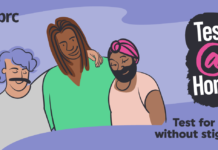
The corporate world seems to always wave the rainbow flag in June, when any show of support to the LGBTQ+ community can become a quick cash grab. However, once Pride Month comes to an end each year, much of the progress that LGBTQ+ employees make often falls to the wayside, as do many of the protections they receive.
Nevertheless, inclusivity in the workplace is a must for all businesses — and it needs to be a value that companies fully embrace for more than a month. As the percentage of Canadian adults self-identifying as LGBTQ+ from 2015 to 2018 rose to 3.3%, creating a safe workspace for all sexual orientations and gender identities is more important than ever.
We’ll explore the difficulties that LGBTQ+ employees face in the workplace, as well as how companies can alleviate their hardships and protect their LGBTQ+ workforce.
How LGBTQ+ Employees Are Left Behind
Over 25% of global LGBTQ+ workers, including the majority of junior employees, aren’t broadly “out” at work. In a time when LGBTQ+ rights are still contentious, openly identifying as a part of the queer community can make employees the targets of microaggressions and social isolation. In fact, openly bisexual women experience significantly more microaggressions and sexual harassment than their straight and male counterparts.
However, not coming out can be stressful in its own right. LGBTQ+ employees may carry the heavy burden of trying to “act straight” throughout their workdays, which can lead to ongoing worries about being outed. This constant anxiety can affect their quality of work and, therefore, their ability to thrive in the workplace and access pay raises and promotions.
As company culture begins to transform, business leaders can play a big role in maintaining the longevity of that company’s inclusion efforts.
How to Make Workplaces More Inclusive for LGBTQ+ Employees
Workplace inclusion initiatives must target the foundations of a business to create long-lasting change in the workplace. While diversity and inclusion training can help workers be mindful of their language and actions, cultural transformation is key to fully embracing the LGBTQ+ community and protecting their workers’ rights.
To start, companies must shift toward inclusive policies that allow for greater freedom of expression for gender identities and sexual orientations. For instance, creating a gender-neutral dress code and implementing gender-neutral bathrooms allows LGBTQ+ employees to comfortably exist without gender norms. Similarly, policies can expressly protect the rights of employees who speak about their same-sex partners or who invite them to company socials.
Leading by Example
As company culture begins to transform, business leaders can play a big role in maintaining the longevity of that company’s inclusion efforts. By keeping doors open for conversations about diversity and inclusion, companies can promote a work environment where everyone’s opinions are equally valued. For instance, employees can discuss their safety concerns about upcoming work trips or sponsored vacations — and as a result, the company can be mindful when planning LGBTQ+ friendly travels for a team.
Keep the conversation going in a company’s chat channels and messaging applications; companies shouldn’t be afraid to field hard questions. Open conversations are key, and unified communications can help transform the workplace by facilitating these conversations, especially in the post-pandemic remote work landscape.
Financially Support the LGBTQ+ Community
A company stating good intentions is never enough to build a truly inclusive workplace. Backing up a commitment to the LGBTQ+ community requires significant actions, including investment in LGBTQ+ protections and support for their financial needs.
Unfortunately, LGBTQ+ employees often lack many of the benefits that straight and cisgender individuals receive. For instance, domestic partners often aren’t covered by life insurance or healthcare benefits, and a lack of paternity leave may prevent male same-sex couples from receiving time off for adoptions. Transgender employees also frequently struggle to find companies with health insurance or medical leave policies that support their transitions.
Providing these missing benefits is a big internal leap toward a completely inclusive workplace.
Employees may also appreciate companies that publicly support the LGBTQ+ community — perhaps by donating to relevant nonprofits or by investing in ongoing pro-LGBTQ+ campaigns. This can show employees that a company is on their side, and that they’re willing to ditch intolerant customers for them.
Sparking a Positive Change as an LGBTQ+ Employee
LGBTQ+ employees can play a role in building inclusivity in the workplace, too. Advocating for your rights in the face of discriminatory policies or microaggressions can be beneficial for all members of your community. However, you don’t have to do it alone. You can form a network of LGBTQ+ employees and allies who can work together to create proposals for positive change, which you can deliver to business leaders as a team.
By forming an alliance, you can also ensure every LGBTQ+ employee feels like they have adequate emotional support and positive work relationships, so no one feels isolated in their roles.
One step at a time, business leaders and LGBTQ+ employees can move toward long-term progress and achieve an enormous positive impact.
- Sam Bowman





